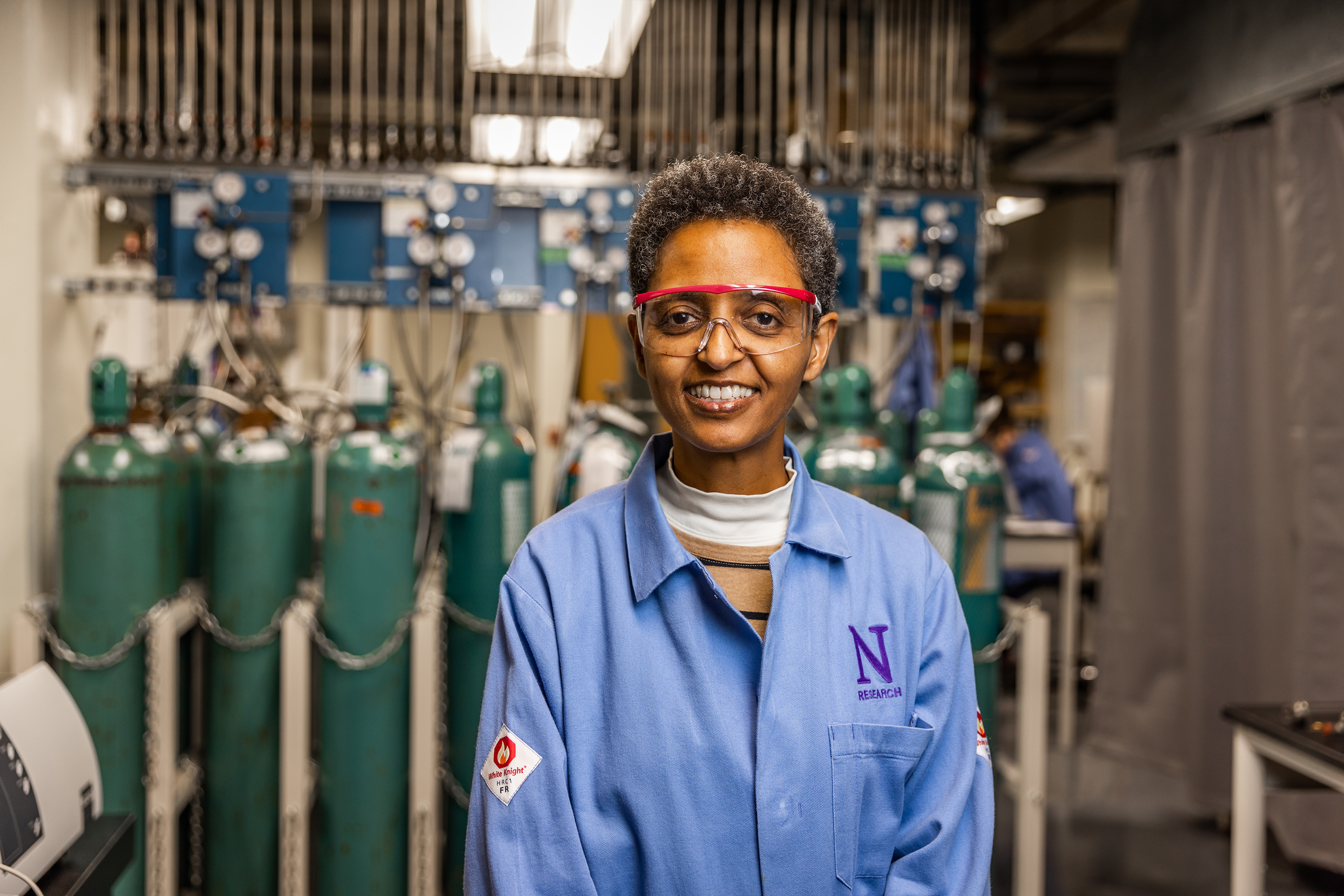Plugging into the Power of Hydrogen
-
-
Slice of MIT
Filed Under
Sossina M. Haile ’86, PhD ’92 has spent her career laying the groundwork for a future in which humans succeed in heating homes, powering industry, and fueling transportation without polluting the planet.
“It is important to me that the whole world has access to electricity, and we do it in a way that’s not adding to our carbon footprint,” says Haile, the Murphy Professor of Materials Science and Engineering and professor of applied physics at Northwestern University.
Well known for pioneering the solid acid fuel cell—an emissions-free way to generate electricity from hydrogen, Haile is the author of hundreds of papers and holds more than a dozen patents relevant to sustainable energy technologies. In 2020, the Materials Research Society recognized her fundamental contributions to materials science with its David Turnbull Lectureship—one of the most prestigious honors in the field.
Immigrant from Ethiopia
Born in Ethiopia, Haile was forced to flee the country in the wake of the 1974 Communist revolution there. She was just shy of her 10th birthday when her family settled in Minnesota, where her father, an accomplished linguist and former Ethiopian parliament member, worked on ancient manuscripts at the Hill Museum & Manuscript Library, run by the Benedictine monks of Saint John’s Abbey.
Though the family had arrived in the United States with few financial resources, Haile was able to attend Saint John’s Preparatory School, where she particularly enjoyed her classes in math and science. She set her sights on the Institute. “I always knew MIT was the place for me,” she says.
Haile discovered her field of research as an MIT undergraduate when she got a work-study job in a materials science lab. Soon she found herself persuading her parents that pursuing a career in materials science was “close enough” to their dream goal for her—becoming a doctor. She went on to earn her master’s degree in materials science from the University of California Berkeley and then returned to MIT for her PhD, conducting battery-related research on the conductivity of alkali rare earth silicates.
The First Solid Acid Fuel Cell
After graduation, Haile followed her interest in ionic conductivity into hydrogen research, which turned out to be a hot topic during the 1990s energy crisis. By the early 2000s, she had joined the faculty at Caltech and developed the first solid acid fuel cell—a device that generates power electrochemically rather than through combustion. Such fuel cells can produce electricity from hydrogen while emitting only water—no greenhouse gases.
The innovation drew a lot of attention, including an article in Newsweek magazine. “People were knocking on my door for this new thing,” says Haile, who helped one of her doctoral students start a company with the technology. Unfortunately, the economic crash of 2008 cooled interest in green energy, and the company struggled.
Back in the lab, Haile turned her focus to creating green hydrogen, since today most hydrogen is made from methane, a fossil fuel. She discovered a metal oxide that naturally releases oxygen when heated and draws it back in when cooled—enabling it to produce hydrogen by drawing oxygen out of water (breaking down H2O). By using concentrated solar power to heat the material, she developed a carbon-free system for generating hydrogen that was even more efficient than photosynthesis—the system plants use to turn solar power into energy.
Haile published this work in Science in 2010. And, although the system has not yet become practical for commercial use, improving it remains on Haile’s research agenda.
In 2015, Haile joined the faculty at Northwestern, and she soon addressed another pain point for building a hydrogen-fueled future—supply. If hydrogen is to become a common fuel for industry and transportation, it will need to be available everywhere. Yet there is currently no infrastructure for moving hydrogen, a gas that easily leaks through the smallest of cracks, from place to place. And to move a reasonable mass of hydrogen, the gas needs to be pressurized, creating a whole host of problems.
However, the United States already has an extensive pipeline system for transporting ammonia, because the chemical is a key ingredient in fertilizer. So, Haile developed an electrochemical process for producing clean hydrogen from ammonia. She published this research in 2020 in the journal Joule.
Haile’s next project is to develop a small, modular system for creating green ammonia—hoping for a cost-effective alternative to a couple of billion-dollar projects currently under way in this arena. “If you have to have huge capital investment, that makes it very hard for the developing world to utilize,” she notes. And for Haile, the goal is always to develop technologies that benefit everyone.
Photo: Matthew Allen









